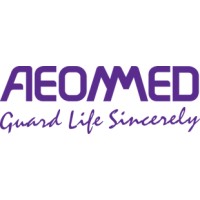Generic Drugs Saved Consumers USD 193 Billion
|
By HospiMedica International staff writers Posted on 21 Aug 2012 |
Generic drugs have saved consumers, state and federal governments, and healthcare systems more than USD one billion every second day in 2011, according to a new report.
The Generic Drug Savings Analysis report, conducted by IMS Health (Parsippany, NJ, USA), and funded by the Generic Pharmaceutical Association (GPhA; Washington DC, USA) spotlights the savings in an effort to encourage policymakers to protect and spur use of their products through an upcoming critical US federal budgetary debate.
Among the findings of the report are that generic drugs have saved the US healthcare system roughly USD 1.07 trillion from 2002 to 2011; savings in 2011 increased 22% over the prior year, making it the largest year-over-year increase since 1998. Savings could also continue to skyrocket, since certain major drugs such as cholesterol drug atorvastatin (Lipitor) and antipsychotic olanzapine (Zyprexa) only became generic late in 2011, and other high-profile drugs such as the blood thinner clopidogrel (Plavix) continue to have generic versions.
The report also found that the greatest one-year savings growth rate came from cancer treatments, which produced USD 10 billion in savings in 2011, more than three times higher than the USD 3 billion saved in 2010. In addition, nearly 80% of the four billion prescriptions written in the US in 2011 were dispensed using safe and effective generic versions of their brand name counterpart drugs.
The report also highlights the effectiveness of the Hatch-Waxman Act, a 1984 legislation largely credited with creating the modern-day generic drug industry. The act creates incentives for companies to file generic drug applications with the US Food and Drug Administration (FDA) sooner, by giving 180-day marketing exclusivity to the first company that files. However, brand drug supporters say the incentives provided in Hatch-Waxman have worked too well and have harmed the innovation of new drugs by stifling company profits and, in turn, new drug development.
As a result, a Health Affairs report from November 2011 called on the US Congress to review the balance of incentives for brand-name and generic drug development. The generic industry claims that as unnecessary, since more new drugs were developed in 2011 than in any year in the past decade.
Related Links:
IMS Health
Generic Pharmaceutical Association
The Generic Drug Savings Analysis report, conducted by IMS Health (Parsippany, NJ, USA), and funded by the Generic Pharmaceutical Association (GPhA; Washington DC, USA) spotlights the savings in an effort to encourage policymakers to protect and spur use of their products through an upcoming critical US federal budgetary debate.
Among the findings of the report are that generic drugs have saved the US healthcare system roughly USD 1.07 trillion from 2002 to 2011; savings in 2011 increased 22% over the prior year, making it the largest year-over-year increase since 1998. Savings could also continue to skyrocket, since certain major drugs such as cholesterol drug atorvastatin (Lipitor) and antipsychotic olanzapine (Zyprexa) only became generic late in 2011, and other high-profile drugs such as the blood thinner clopidogrel (Plavix) continue to have generic versions.
The report also found that the greatest one-year savings growth rate came from cancer treatments, which produced USD 10 billion in savings in 2011, more than three times higher than the USD 3 billion saved in 2010. In addition, nearly 80% of the four billion prescriptions written in the US in 2011 were dispensed using safe and effective generic versions of their brand name counterpart drugs.
The report also highlights the effectiveness of the Hatch-Waxman Act, a 1984 legislation largely credited with creating the modern-day generic drug industry. The act creates incentives for companies to file generic drug applications with the US Food and Drug Administration (FDA) sooner, by giving 180-day marketing exclusivity to the first company that files. However, brand drug supporters say the incentives provided in Hatch-Waxman have worked too well and have harmed the innovation of new drugs by stifling company profits and, in turn, new drug development.
As a result, a Health Affairs report from November 2011 called on the US Congress to review the balance of incentives for brand-name and generic drug development. The generic industry claims that as unnecessary, since more new drugs were developed in 2011 than in any year in the past decade.
Related Links:
IMS Health
Generic Pharmaceutical Association
Latest Business News
- Philips and Masimo Partner to Advance Patient Monitoring Measurement Technologies
- B. Braun Acquires Digital Microsurgery Company True Digital Surgery
- CMEF 2025 to Promote Holistic and High-Quality Development of Medical and Health Industry
- Bayer and Broad Institute Extend Research Collaboration to Develop New Cardiovascular Therapies
- Medtronic Partners with Corsano to Expand Acute Care & Monitoring Portfolio in Europe
- Expanded Collaboration to Transform OR Technology Through AI and Automation
- Becton Dickinson to Spin Out Biosciences and Diagnostic Solutions Business
- Boston Scientific Acquires Medical Device Company SoniVie
- 2026 World Hospital Congress to be Held in Seoul
- Teleflex to Acquire BIOTRONIK’s Vascular Intervention Business
- Philips and Mass General Brigham Collaborate on Improving Patient Care with Live AI-Powered Insights
- Arab Health 2025 Celebrates Landmark 50th Edition
- Boston Scientific Acquires Medical Device Company Intera Oncology
- MEDICA 2024 to Highlight Hot Topics of MedTech Industry
- Start-Ups To Once Again Play Starring Role at MEDICA 2024
- Boston Scientific to Acquire AFib Ablation Company Cortex
Channels
Critical Care
view channel
AI Models Identify Patient Groups at Risk of Being Mistreated in Hospital ED
Triage errors in emergency departments can have life-or-death consequences, but identifying the root causes behind these errors has long been a challenge. Now, a team of researchers has applied machine... Read more
CPR Guidelines Updated for Pediatric and Neonatal Emergency Care and Resuscitation
Cardiac arrest in infants and children remains a leading cause of pediatric emergencies, with more than 7,000 out-of-hospital and 20,000 in-hospital cardiac arrests occurring annually in the United States.... Read moreSurgical Techniques
view channel
Wireless Metamaterial Spinal Implants Can Feel, Heal and Communicate
Spinal fusion, a common surgery performed on nearly a million Americans each year, often requires repeated hospital visits and radiation exposure to monitor recovery. Traditional monitoring relies on X-rays... Read more
Major Study Examines Endoscopies that Fail to Detect Esophageal Cancer
Barrett’s esophagus—the only known precancerous condition for esophageal adenocarcinoma—develops when chronic acid reflux damages the esophageal lining. Endoscopies are typically used to monitor such patients... Read morePatient Care
view channel
Revolutionary Automatic IV-Line Flushing Device to Enhance Infusion Care
More than 80% of in-hospital patients receive intravenous (IV) therapy. Every dose of IV medicine delivered in a small volume (<250 mL) infusion bag should be followed by subsequent flushing to ensure... Read more
VR Training Tool Combats Contamination of Portable Medical Equipment
Healthcare-associated infections (HAIs) impact one in every 31 patients, cause nearly 100,000 deaths each year, and cost USD 28.4 billion in direct medical expenses. Notably, up to 75% of these infections... Read more
Portable Biosensor Platform to Reduce Hospital-Acquired Infections
Approximately 4 million patients in the European Union acquire healthcare-associated infections (HAIs) or nosocomial infections each year, with around 37,000 deaths directly resulting from these infections,... Read moreFirst-Of-Its-Kind Portable Germicidal Light Technology Disinfects High-Touch Clinical Surfaces in Seconds
Reducing healthcare-acquired infections (HAIs) remains a pressing issue within global healthcare systems. In the United States alone, 1.7 million patients contract HAIs annually, leading to approximately... Read moreHealth IT
view channel
















